The jacquard loom changed the game: Complex textile patterns were drawn onto grid paper and sent to a specialist who transformed the drawings into perforations punched onto a series of cards, which were then fed through the specialized loom, similar to how a player piano roll produces a song. Though a computer program handles the task today, knowing the history of this elegant craft can help us appreciate the long tradition of some of the most intricate fabric designs.
Jules Duffy Designs
Cut velvet
Cut velvet is a form of jacquard created when the velvet weft yarns are raised above the perpendicular warp yarns and then snipped into a soft pile. Fabrics that feature cut velvet typically boast a solid ground (or background, in non-fabric-speak) and a single color in the velvet. Expect multicolored cut velvet jacquards to boost the price per yard.
Cut velvet is a form of jacquard created when the velvet weft yarns are raised above the perpendicular warp yarns and then snipped into a soft pile. Fabrics that feature cut velvet typically boast a solid ground (or background, in non-fabric-speak) and a single color in the velvet. Expect multicolored cut velvet jacquards to boost the price per yard.
Tapestry
Tapestry is a heavy, jacquard-woven brocade in which multicolored warp yarns are used in both the warp and weft. Textile artists leverage the richness and variety of color to depict elaborate, colorful scenes. Though the resultant fabric is hardy, many find tapestries too precious to deploy for everyday use, which is why you’ll more commonly see them on walls than on furniture.
Tapestry is a heavy, jacquard-woven brocade in which multicolored warp yarns are used in both the warp and weft. Textile artists leverage the richness and variety of color to depict elaborate, colorful scenes. Though the resultant fabric is hardy, many find tapestries too precious to deploy for everyday use, which is why you’ll more commonly see them on walls than on furniture.
Emmanuel Design Group, LLC
Featured here is a bevy of jacquard fabrics on furniture pieces by Emmanuel Design Group, a Texas furniture maker that specializes in techniques used by 16th-century artisans. Jacquard fabrics loomed the traditional way perfectly complement custom and antique furniture pieces.
Story & Space - Interior Design and Color Guidance
Matelasse
French for “quilted,” matelasse is another woven fabric that is commonly created on a jacquard loom using a double-cloth technique. Instead of single warp and weft yarns, additional filler or “stuffer” yarns are added to produce a pattern with a quilted look. Matelasse fabrics are most commonly found as bedding, but there’s no reason they can’t be used as upholstery and drapery.
French for “quilted,” matelasse is another woven fabric that is commonly created on a jacquard loom using a double-cloth technique. Instead of single warp and weft yarns, additional filler or “stuffer” yarns are added to produce a pattern with a quilted look. Matelasse fabrics are most commonly found as bedding, but there’s no reason they can’t be used as upholstery and drapery.
Julia West Home
Here’s an example of a beautiful matelasse chair.
Damask
Plenty of design enthusiasts have come to identify the damask weave with the iconic large-scale stylized floral pattern shown here, but it’s actually a type of jacquard technique. True damask fabrics may feature geometric or floral patterns and are typically tone-on-tone, with a flat face and a bit of sheen. Flip over a woven damask and you’ll find the negative image with the colors reversed.
Plenty of design enthusiasts have come to identify the damask weave with the iconic large-scale stylized floral pattern shown here, but it’s actually a type of jacquard technique. True damask fabrics may feature geometric or floral patterns and are typically tone-on-tone, with a flat face and a bit of sheen. Flip over a woven damask and you’ll find the negative image with the colors reversed.
Kit Golson Design
Paisley
Though paisley originated in Persia, where it had traditionally been hand-loomed using only two colors of yarn, it really blossomed in Western Europe after the invention of the jacquard loom. Weavers in Paisley, Scotland, blew away the competition by using the new loom to produce the age-old fig-leaf pattern using five colors.
Though paisley originated in Persia, where it had traditionally been hand-loomed using only two colors of yarn, it really blossomed in Western Europe after the invention of the jacquard loom. Weavers in Paisley, Scotland, blew away the competition by using the new loom to produce the age-old fig-leaf pattern using five colors.
Debra Campbell Design
Brocade
Much like tapestry, brocade fabrics are thick, stiff and often colorful. Gold and silver threads are typically mixed into the palette, resulting in rich, luxurious textiles with a pronounced sheen. Viewing the reverse side of a brocade fabric is an education in itself: You’ll see where the fibers have been cut to create the design on the front.
Much like tapestry, brocade fabrics are thick, stiff and often colorful. Gold and silver threads are typically mixed into the palette, resulting in rich, luxurious textiles with a pronounced sheen. Viewing the reverse side of a brocade fabric is an education in itself: You’ll see where the fibers have been cut to create the design on the front.
Tobi Fairley Interior Design
Printed Damask
Today, traditional damask patterns are printed on what we call “greige goods,” which is essentially a plain, undyed base fabric like a raw cotton duck or canvas. Working in a fabric showroom, I see the shock on customers’ faces when they see the price of some printed fabrics: A simple damask with a single color featured on greige goods need not cost much, but when you see 14 different colors sampled on the selvedge of a beautiful Ralph Lauren floral, resist the urge to yell, “But it’s just printed cotton!” Each color is printed and dyed separately, so the more colors you see in a fabric, the longer it took to fabricate and the pricier it’s likely to be.
More Textile Textbook: Meet Your Must-Have Synthetic Fabrics | Fall in Love With These Prints From Around the World | Get Ready to Be Wooed by Wovens
Today, traditional damask patterns are printed on what we call “greige goods,” which is essentially a plain, undyed base fabric like a raw cotton duck or canvas. Working in a fabric showroom, I see the shock on customers’ faces when they see the price of some printed fabrics: A simple damask with a single color featured on greige goods need not cost much, but when you see 14 different colors sampled on the selvedge of a beautiful Ralph Lauren floral, resist the urge to yell, “But it’s just printed cotton!” Each color is printed and dyed separately, so the more colors you see in a fabric, the longer it took to fabricate and the pricier it’s likely to be.
More Textile Textbook: Meet Your Must-Have Synthetic Fabrics | Fall in Love With These Prints From Around the World | Get Ready to Be Wooed by Wovens
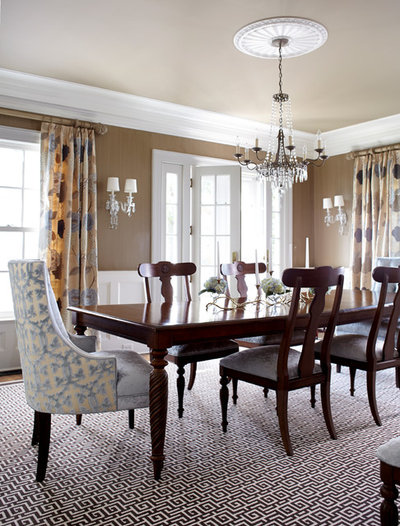
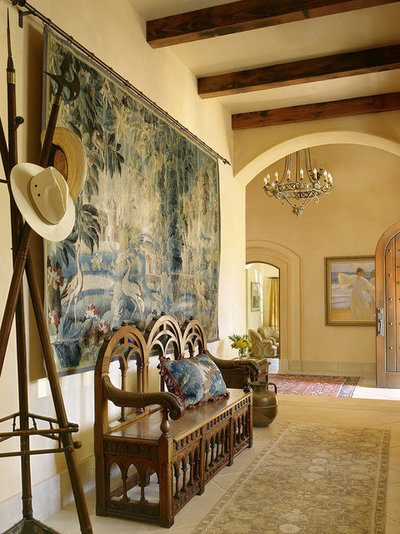
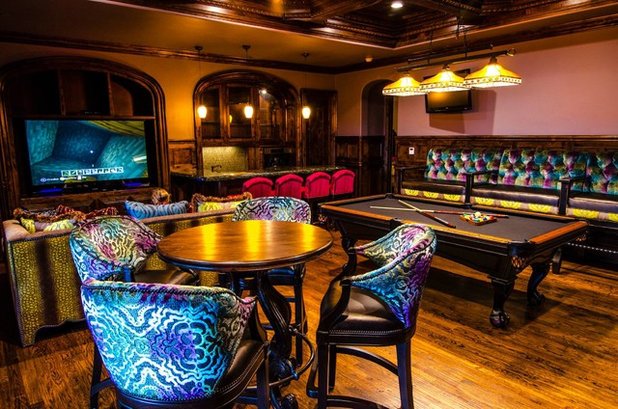
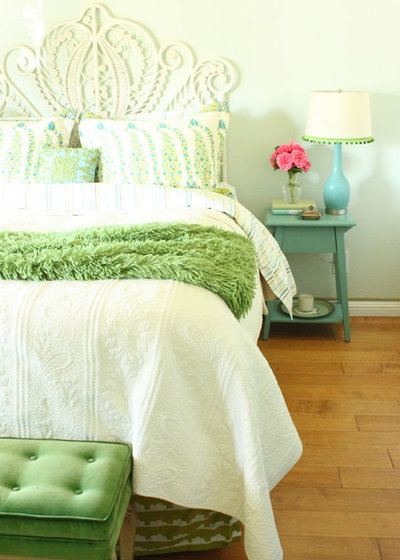
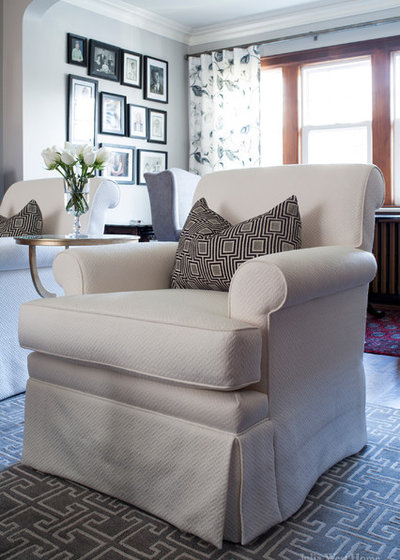
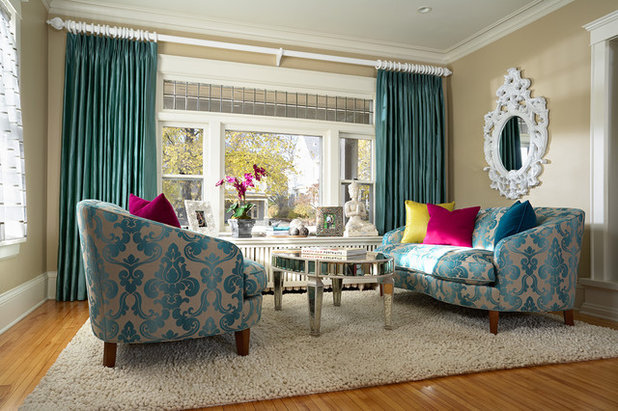
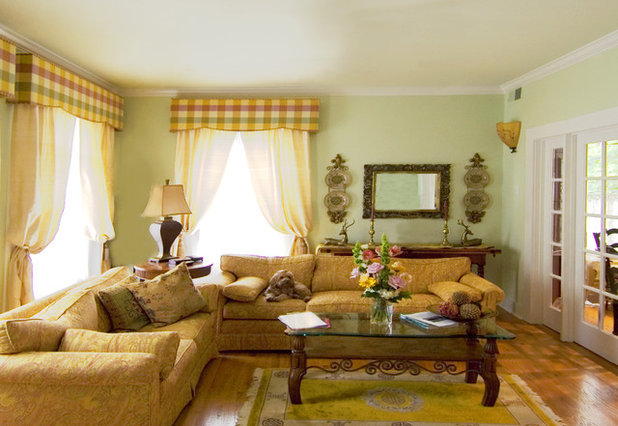
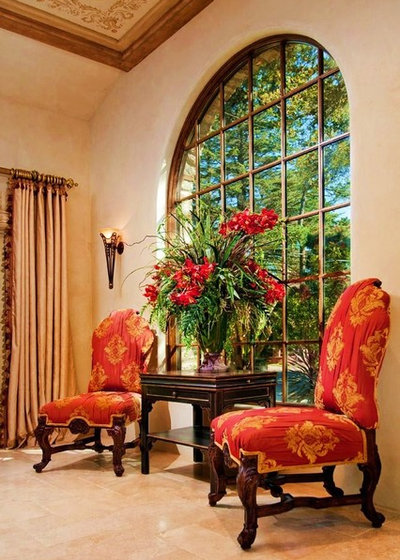
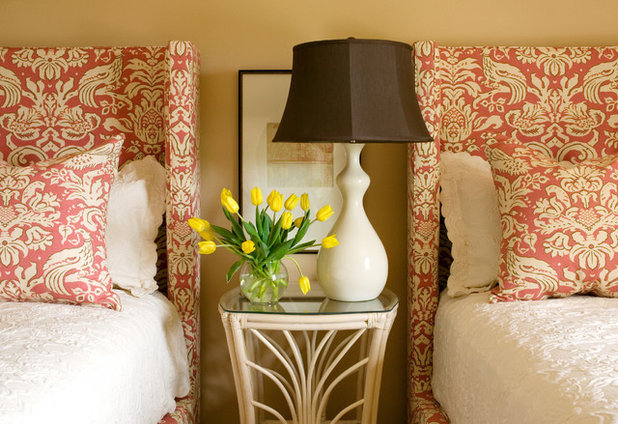
0 comments:
Post a Comment